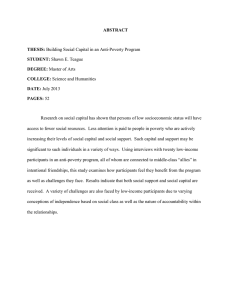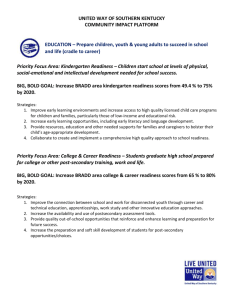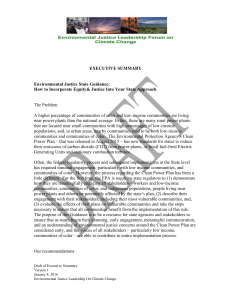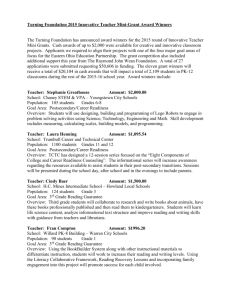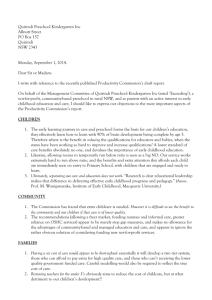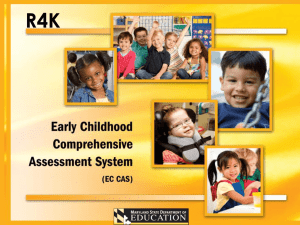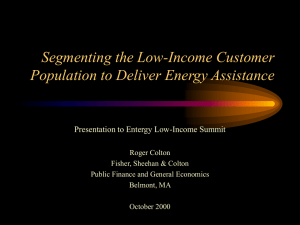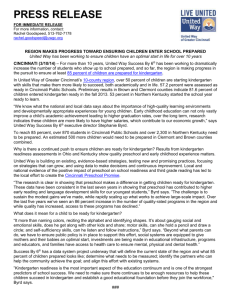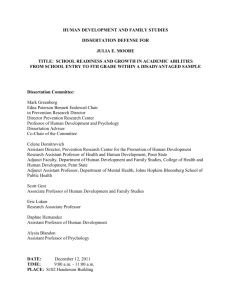1-What-is-School-Readiness - The Campaign for Grade
advertisement
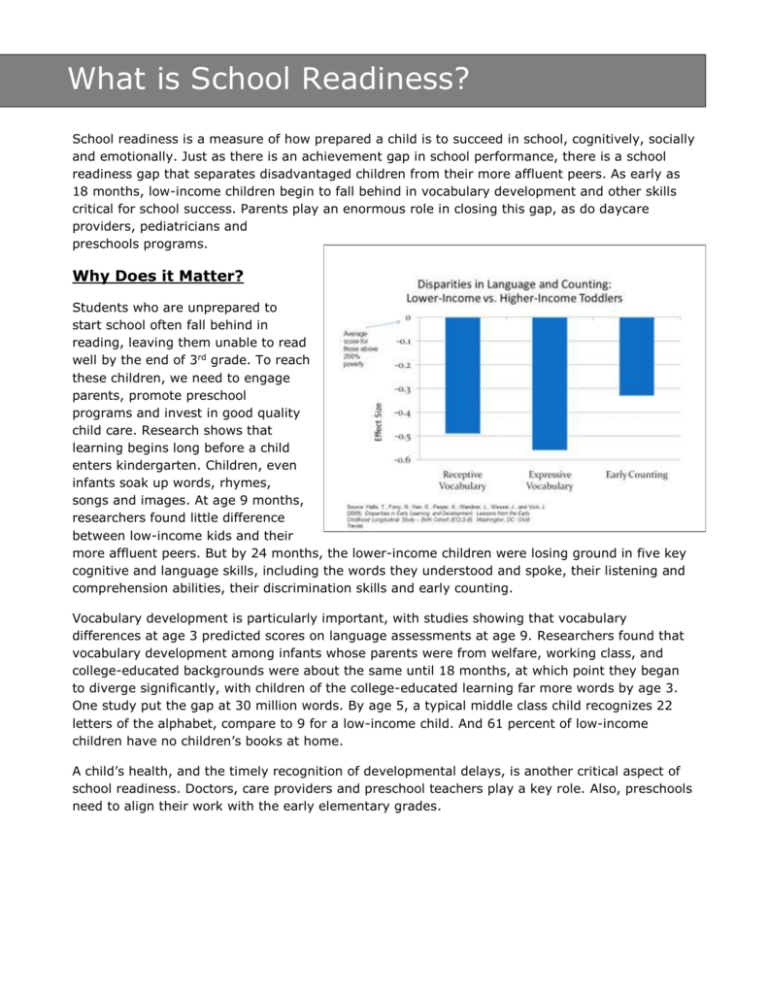
What is School Readiness? School readiness is a measure of how prepared a child is to succeed in school, cognitively, socially and emotionally. Just as there is an achievement gap in school performance, there is a school readiness gap that separates disadvantaged children from their more affluent peers. As early as 18 months, low-income children begin to fall behind in vocabulary development and other skills critical for school success. Parents play an enormous role in closing this gap, as do daycare providers, pediatricians and preschools programs. Why Does it Matter? Students who are unprepared to start school often fall behind in reading, leaving them unable to read well by the end of 3rd grade. To reach these children, we need to engage parents, promote preschool programs and invest in good quality child care. Research shows that learning begins long before a child enters kindergarten. Children, even infants soak up words, rhymes, songs and images. At age 9 months, researchers found little difference between low-income kids and their more affluent peers. But by 24 months, the lower-income children were losing ground in five key cognitive and language skills, including the words they understood and spoke, their listening and comprehension abilities, their discrimination skills and early counting. Vocabulary development is particularly important, with studies showing that vocabulary differences at age 3 predicted scores on language assessments at age 9. Researchers found that vocabulary development among infants whose parents were from welfare, working class, and college-educated backgrounds were about the same until 18 months, at which point they began to diverge significantly, with children of the college-educated learning far more words by age 3. One study put the gap at 30 million words. By age 5, a typical middle class child recognizes 22 letters of the alphabet, compare to 9 for a low-income child. And 61 percent of low-income children have no children’s books at home. A child’s health, and the timely recognition of developmental delays, is another critical aspect of school readiness. Doctors, care providers and preschool teachers play a key role. Also, preschools need to align their work with the early elementary grades. What are Communities Doing? Encouraging parent engagement—Parents are their children’s first teachers, but don’t always know the best ways to get them ready to start school. Schools are setting up parents’ academy to teach them how to provide the verbal interaction and build the routines their children need to succeed. These parents often become leaders when their children get to elementary school. Adopting cradle-to-career approaches: The Harlem Children’s Zone is the most famous example of this and has become the model for the U.S. Department of Education’s Promise Neighborhood initiative. But there are other good examples; PS 5 in Manhattan is a community school that begins helps parents find prenatal care, offers health outreach for young children and provides prekindergarten classes that transition smoothly into kindergarten. Setting early education milestones: Many states are extending the standards movement to guidelines for the early years. In Georgia, educators and social service providers have created a set of milestones for different stages of development—and then tracking student progress through the primary grades. The Georgia Early Education Alliance for Ready Students includes civic and business leaders. Visiting low-income families at home: Communities across the country use visiting nurse programs to check on the health and development of children with little access to health care. Springfield, Mass is launching a program that will bring public school teachers to two public housing complexes to help parents build their children’s literacy skills and encourage other steps to improve school readiness. Aligning preschool programs with the primary grades: New Jersey is building a system that brings low-income children to prekindergarten as early as age 3 and ensures that what they learn there aligns with the kindergarten through 3rd grade curriculum in the public schools. Launching early literacy campaigns: New Britain, Conn., introduced its Campaign for GradeLevel Reading last fall with state, local and philanthropic support. The campaign aims to engage parents, community services and educators to ensure children are reading well by the end of 3rd grade.
